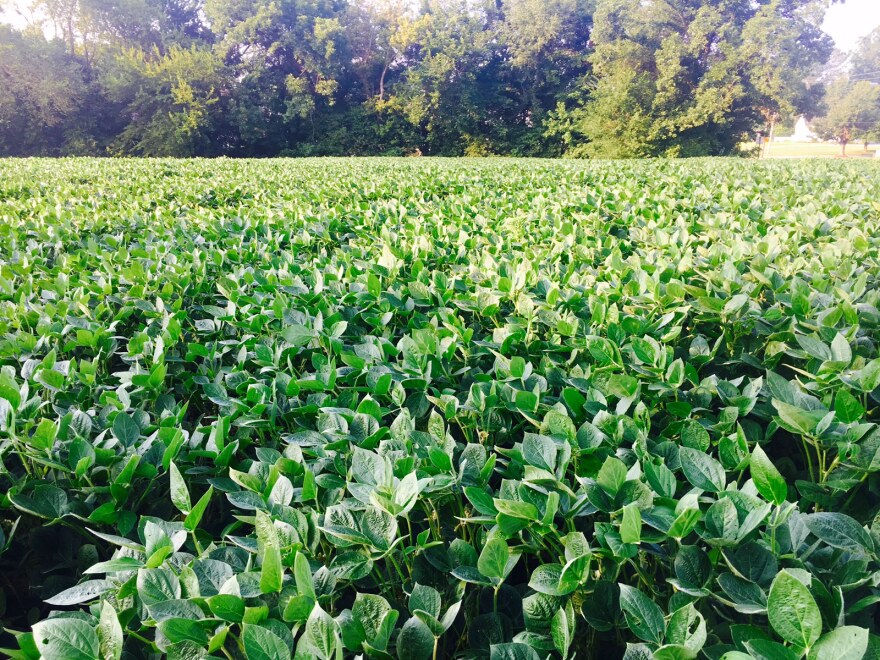Dicamba, an active ingredient in several herbicides produced by Monsanto, has some farmers frustrated by its volatility after the 2017 crop season. While many farmers' fields have benefited from the use of dicamba, it comes at a cost to neighboring fields that have been damaged by it drifting onto planted crops that aren’t equipped to handle it. Missouri Department of Agriculture director Chris Chinn explains the actions they’ve taken to benefit both sides of the issue.
Grojean: So, the MDA released a stop sale, use, and removal order on dicamba products on July 13, but approved provisions for its application on certain crops. Could you summarize what all the MDA has considered and decided on these past few weeks?
Chinn: We had received 264 complaints this year so far; 206 are allegedly dicamba-related pesticide drift complaints. So, based upon the feedback that we've been receiving from Missouri and our neighboring states about the continued reports of crop damage, the department felt that it would be best to temporarily put a stop sale on the use of dicamba products until we could create a special local need label and get it approved. So the stop sale, use, and removal order was issued on July the 7, but on July 13, in an effort to help reduce off-target crop injury, the Department of Agriculture approved a special local need label for Engenia, Xtendimax, and Fexapan, which includes some special provisions and safeguards so that they can continue to use this technology in Missouri.
Grojean: Alright. So you guys want to prevent unwanted effects of pesticide use on non-target crops, while keeping them available for crops we need them to be used on. For there to be such a controversy over Dicamba use, there must be positives and negatives that go along with its use. Could you give me a few advantages and disadvantages of the herbicide?
Chinn: Sure. So, we have farmers who are on both sides of this issue, as you might imagine. We’ve heard from farmers who are successfully using this technology to tackle the weed problems and the pressure that they have on their farm. This allows them to make less trips across their fields: it’s a more environmentally safe way to produce their crop, and they’ve been seeing a lot of great success with it. But we’ve also heard from people on the other side of the issue who have suffered crop injury from off-target movement. I’ve walked those fields across Missouri to see the damage first-hand, and it really is heartbreaking to see it because you know all the hard work that went into those farmers planting that crop and how proud they are of their fields. So, we truly are caught in the middle. There is no winner in this situation, no matter what side of the fence you’re on. But we do want to do everything we can to protect that technology because it really is producing some beautiful fields that are very clean and free of weeds. But on the other side of that issue we want to make sure we do everything we can to protect the farmers who are not taking advantage of that technology, so that they can have that ability to grow a successful crop on their farmland as well.
Grojean: And that probably answered another one of my questions how has the controversy over the Dicamba use impacted farmers?
Chinn: Well, you know, with any new technology, there’s going to be growing pains, and our goal is just to help farmers and ranchers that are on both sides of this issue through them. We’re working with farmers and ranchers, the manufacturers and other states to find out what’s working well, and what we can do to put some safeguards there, so that everybody can be good stewards of the land and be good neighbors at the same time.
Grojean: How will the ban be enforced on older forms of the chemical?
Chinn: Currently, the older formulations of the chemical dicamba are prohibited until December 1 of 2017. We have a list on our website of products that are on that ban. We only have the products listed there that are labeled “in-crop use”, so you know anything that is labeled in “non-crop use”, we’ve listed from that list. There’s about 30 to 35 products that are out there now where dicamba is not the only active ingredient that farmers will be able to use for their pastures and things of that nature.
Grojean: So what do you see - of course this probably isn’t a question that can be clearly answered yet - but what does the MDA predict for the future of dicamba? How are you guys prepping to handle the issue before the next big crop season rolls around?
Chinn: You know, I think it’s going to be really important for us to look and see how this year ends up, and we’re going to have to be making plans like what we’re going to do next year to move forward in a manner that is good for everybody. It’s something that we’re studying, the University of Missouri is working on it, the manufacturers are working on it, and farmers are working on it as well, so it’s definitely an issue we’re going to have to address before we move forward.
Grojean: That’s all I need for today; thank you so much.
Chinn: No problem, Lindsey. Thank you.
For more infromation, visit agriculture.mo.gov/dicamba.

